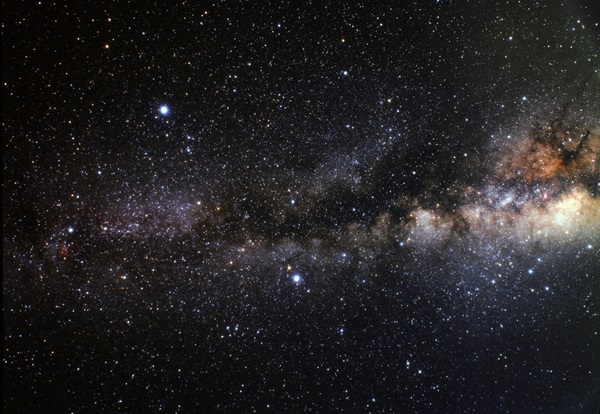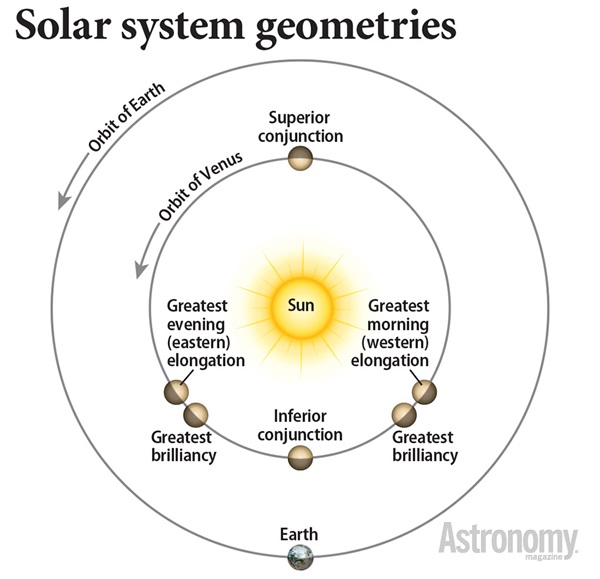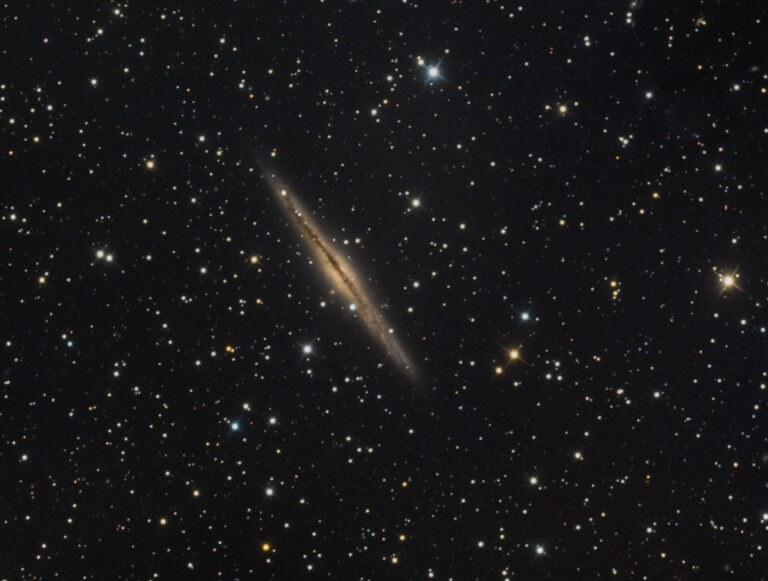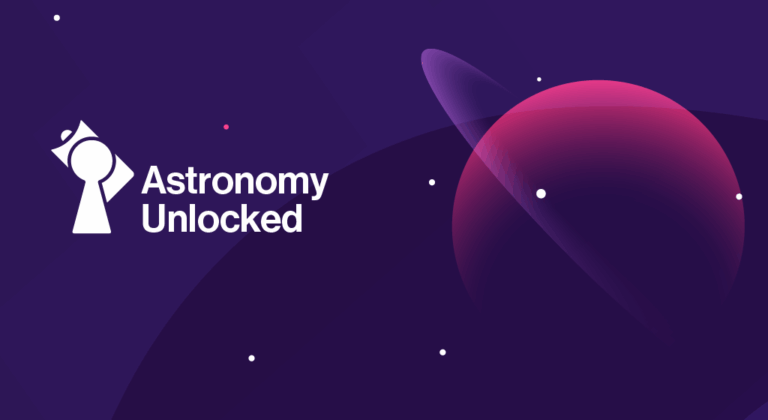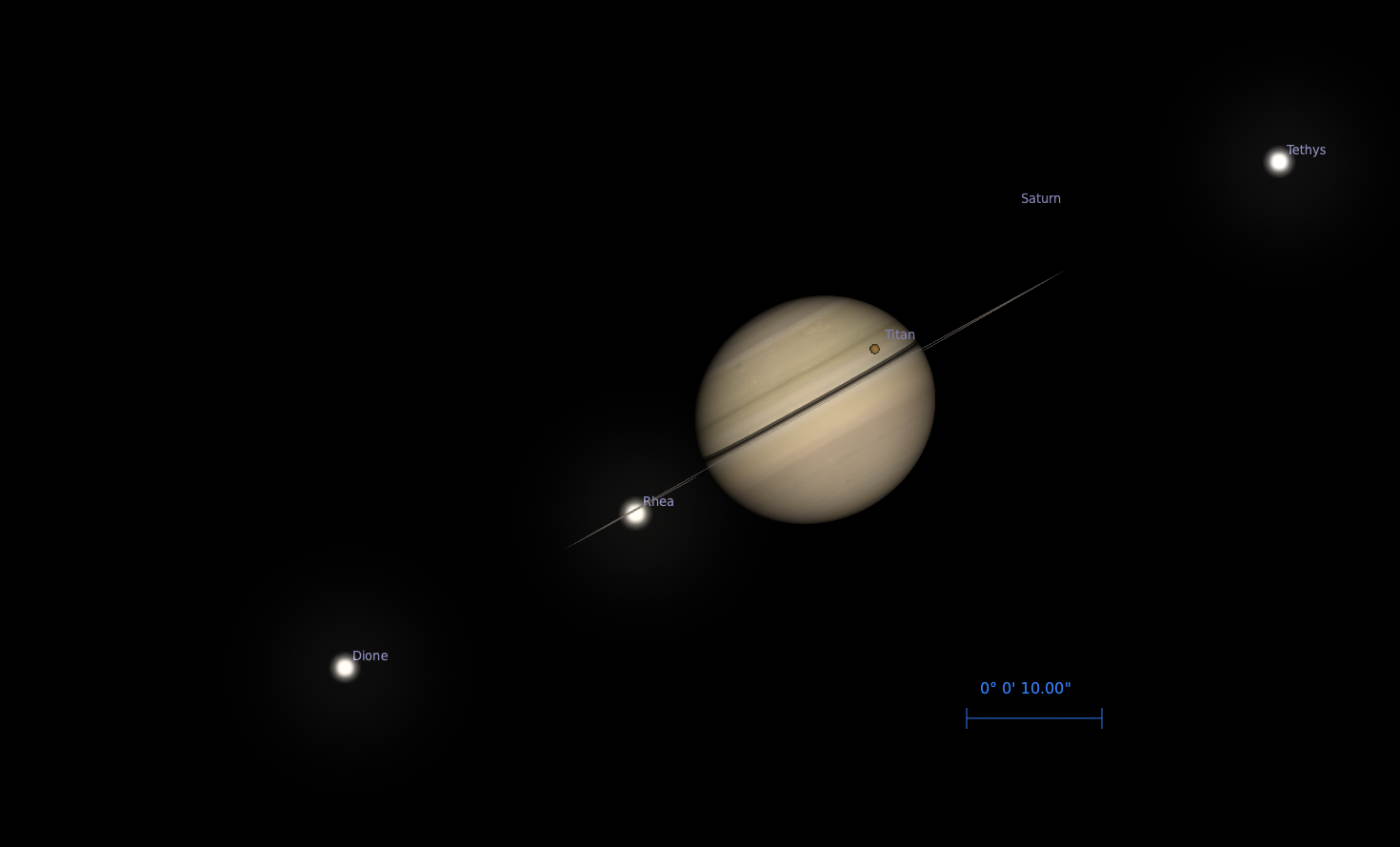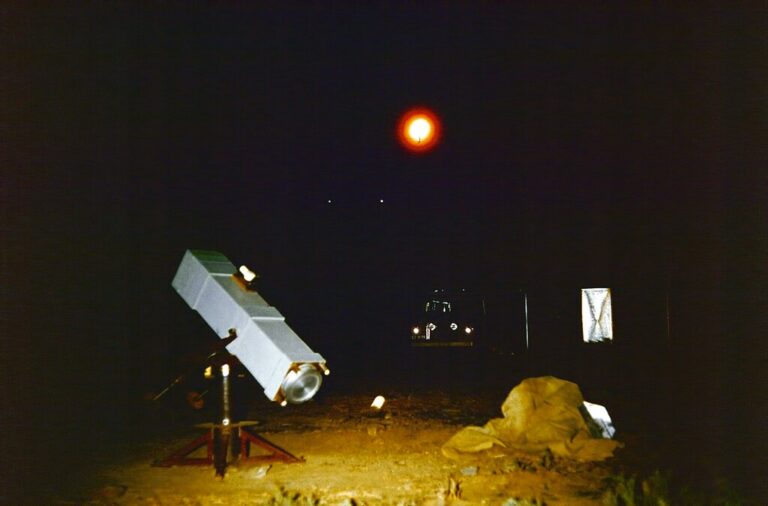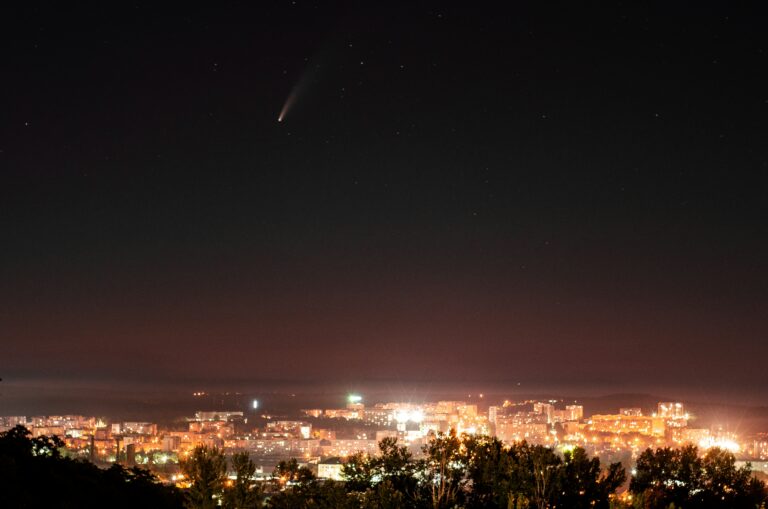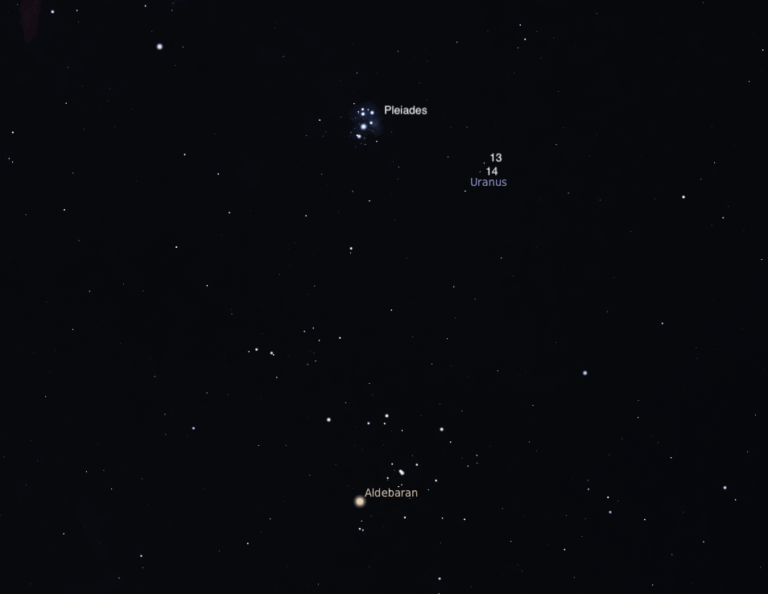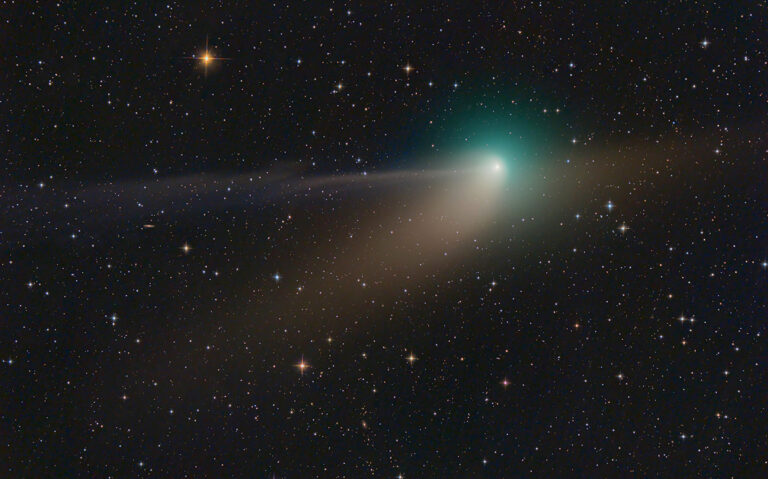Key Takeaways:
The famous Summer Triangle asterism is rising in the northeast as the Sun sets. By two hours after sunset, all three of its stars — Vega in Lyra, Deneb in Cygnus, and Altair in Aquila — have cleared the horizon, although Altair is still low in the east. Vega is the brightest of the three, shining at magnitude 0. It’s also highest in the sky as the stars rise, with Deneb to its lower left (east) and Altair to its lower right (southeast). Keep watching as the hours tick by and the Triangle climbs higher; the asterism will stay with us throughout the summer months, becoming a familiar seasonal friend.
First Quarter Moon occurs tonight at 11:30 P.M. EDT.

Astronomy is pleased to present The Complete Star Atlas, the perfect resource for stargazers of all ages. This practical guide to viewing the night sky is now available, and includes approximately 87,000 stars, 1,200 deep-sky objects, and 24 high-quality star maps. You’ll also find 50 pages of astronomy history, tips, and more from experienced Contributing Editor Michael E. Bakich.
Jupiter makes for an excellent early-morning target, rising about midnight and hiking higher in the sky with each passing hour. With a scope, the gas giant shows off breathtaking detail — and, if you glance at it around 3 A.M. EDT, two moons. Ganymede and Callisto lie to the planet’s southwest and northeast, respectively. Come back an hour later, and a third moon has appeared: Io now sits northeast of the planet, having popped out from behind Jupiter at 3:37 A.M. EDT. Wait just a few minutes more, and at 4:11 A.M. EDT Europa appears from behind the planet, slightly south of Io. Both moons quickly move away in the brightening twilight.
Sunday, May 31
Neptune and Mars share the early-morning sky, making the former easier to find. Two hours before sunrise, they’re nearly 20° above the east-southeastern horizon. Mars is easy to spot at magnitude 0, about 2° below (southeast) of magnitude 3.7 Lambda (λ) Aquarii. Neptune is 8.6° east of Mars and only 3° east of magnitude 4 Phi (φ) Aquarii. Binoculars or a small scope will show the ice giant shining at magnitude 7.9, with a disk just 2″ across.
Tiny Pluto glows at magnitude 14.7 — a challenge for telescopic observers under less-than-ideal conditions, but within easy reach of imaging equipment. This morning, you can find it just 4′ due south of a magnitude 9 field star, HIP 97251. Jupiter, blazing at magnitude –2.6, is just over 1° to the pair’s northeast. Although a bright gibbous Moon is also up, it’s relatively far away. Still, if you have trouble finding the dwarf planet, don’t worry — there will be plenty of chances on darker nights later this month.
Tuesday, June 2
The Moon reaches perigee at 11:38 P.M. EDT today. At that time, our satellite will be 226,406 miles (364,365 kilometers) from Earth.
You can find the Moon, which is 82 percent lit, in the constellation Virgo tonight. Two hours after sunset, it’s about 6.5° north of Spica, Virgo’s magnitude 1 alpha star. A little less than 33° above Spica in the sky is Arcturus in Boötes, one of the night sky’s brightest stars. This orange luminary is a giant star a little less than 40 light-years away. It is 25 times wider than the Sun. Placed in our solar system, its surface would reach out a quarter of the way to Mercury. The light from Arcturus was famously used to open the Chicago World’s Fair in 1933 — chosen because the light from the star reaching Earth in 1933 had left Arcturus about the time of the previous Chicago World’s Fair, which took place in 1893.
Venus is in inferior conjunction at 2 P.M. EDT. When this occurs, Venus and Earth are on the same side of the Sun. Such geometry is only possible with the inferior planets Mercury and Venus, as well as any small solar system bodies, such as asteroids or comets, whose orbits take them inside the orbit of Earth.
Today also marks the 50th anniversary of the first American spacewalk, completed by Ed White during the Gemini 4 mission. Shortly after sunset tonight, you can spot the constellation with the same name — Gemini the Twins — in the west-northwest. Its two brightest stars, Castor and Pollux, appear side by side above the horizon, roughly 20° high an hour after sunset. These stars represent the heads of the twins, with their stick figure-like bodies beneath them, standing upright in the sky. Castor, the slightly fainter white star to the right of brighter and orange-hued Pollux, is a multiple-star system whose brightest components — A and B — are easy to split. They’re about 5″ apart in even a small telescope.
Beneath Gemini is Mercury, still visible after sunset. We’ll return here tomorrow, when the speedy planet reaches greatest eastern elongation.
Thursday, June 4
Mercury is at greatest eastern elongation (24°) at 9 A.M. EDT, but the best time to view it is this evening. The planet won’t set until two hours after sunset, but it may be challenging to catch at only 7° above the horizon (for observers near 40° north) one hour after the Sun sets. Its magnitude is 0.4. You’ll find the planet about 15° below Castor and Pollux, again sinking in the west-northwest as twilight darkens the sky. Through a telescope, you’ll see Mercury’s 8″-wide disk is 36 percent lit.
The small planet will continue to both wane and set earlier each day, fading in brightness even as its disk grows in apparent size over the next two weeks.
Friday, June 5
Full Moon occurs at 3:12 P.M. EDT. A penumbral lunar eclipse will also occur today, although it isn’t visible for observers in the U.S. or Canada, nor much of South America. The eastern portion of South America, as well as Africa, Australia, Europe, and much of Russia, will be able to view all or part of the event. A penumbral eclipse occurs when the Moon passes through the lighter portion of Earth’s shadow, called the penumbra, causing a shading effect, although none of the Moon will go completely dark.
North American observers can still get in on the Moon action, however, by swinging binoculars or scopes to the Full Moon to enjoy the sprawling lunar landscape on display. Be aware that the Full Moon can be exceptionally bright through optical aid, however, and will put a serious damper on your night vision. If you have one, use a Moon filter in your scope; alternatively, crank up the power, which will spread out the light and make viewing more comfortable.

Our exclusive Sky Guide 2020 is now available! This free downloadable pamphlet contains a month-by-month rundown of 2020’s biggest celestial events, from Mars’ best opposition in years to the return of totality in South America this December. Check out Astronomy’s Sky Guide 2020 now!

